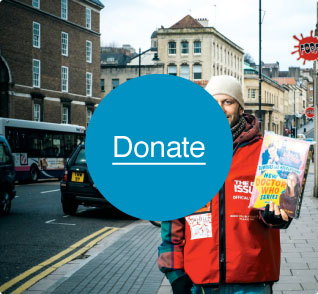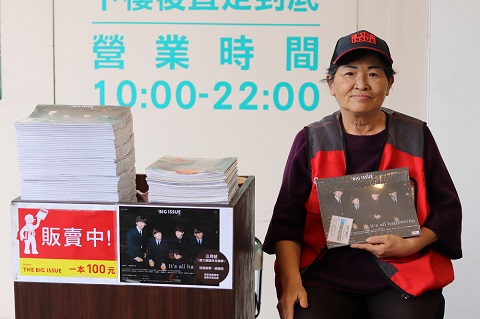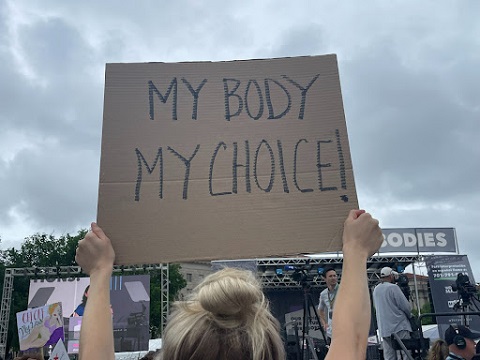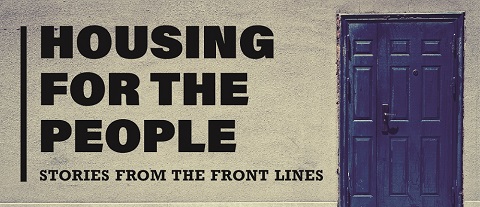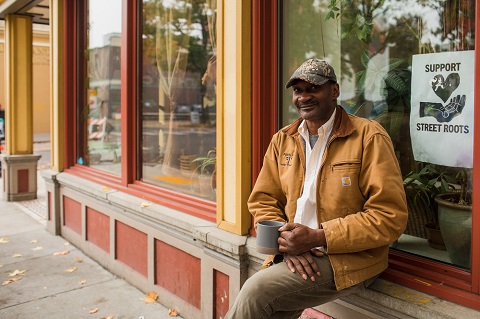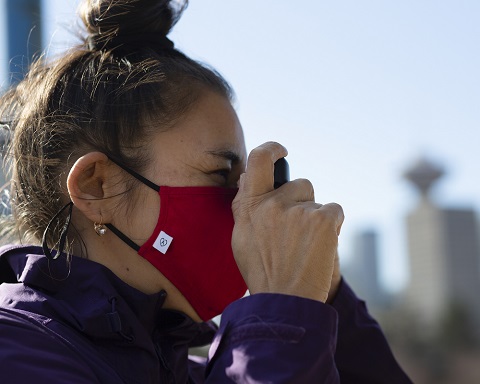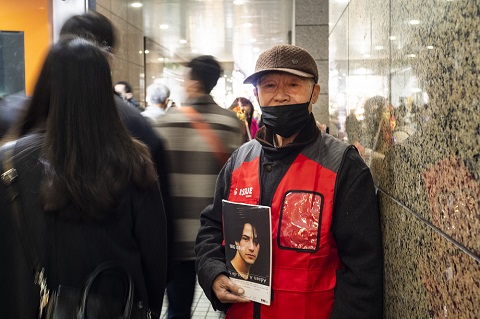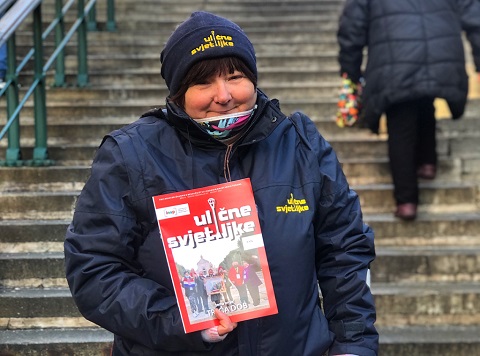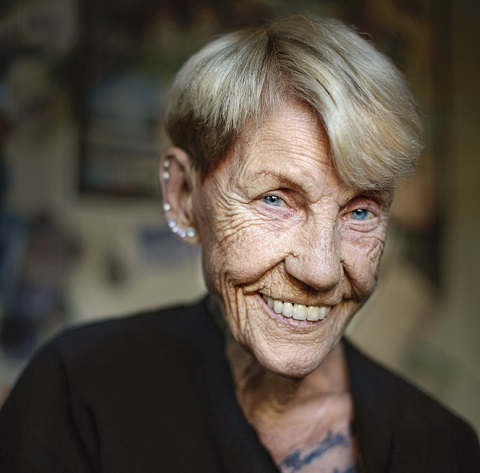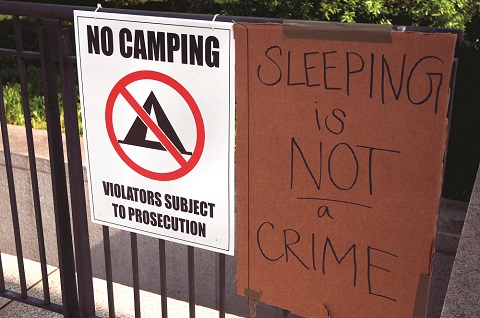By Helen Hill, Street Roots
People experiencing extreme poverty and homelessness often suffer from foot problems caused by ill-fitting or worn out shoes, wet shoes, shelter showers shared by hundreds and often teeming with contagious skin diseases, abscesses and infections, long hours spent selling papers and standing in lines and, finally, the need to walk miles every day for survival, often shouldering a heavy pack.
Street Roots hands out free socks year round, and in the winter months, dozens of donated pairs are distributed daily. Nurses offer foot clinics to vendors a handful of times during the year, but neither the dry socks nor the clinics make a lasting dent in the chronic foot problems plaguing people on the streets.
When asked to talk about their foot problems, nearly every Street Roots vendor had a story to tell.
Vendor George McCarthy has experienced “septic wounds, dermatitis, ringworm, scabies, athlete’s foot, staph infections and foliculitis” in the past year while he’s been staying at a downtown shelter, he said.
“Trying to keep your skin and feet in good condition is very difficult. The last time this happened to me, it took nine months before I could walk without pain.” George has been recovering at a shelter outside of the downtown core for the past few weeks.
“I should be able to walk again in a few days. It’s so amazing when you can just get some time to yourself to heal,” he said.
Vendor George McCarthy has experienced “septic wounds, dermatitis, ringworm, scabies, athlete’s foot, staph infections and foliculitis”
Stephanie S. has been homeless for many years.
“We had a tent before, and I could take my shoes off at night,” she said. “Here in Portland, having to move from camp to camp, I have to keep my shoes on because people make off with them. Then your feet can’t get air. My feet are constantly in pain. If my foot sweats and it runs into one of the cuts on it, it hurts really bad. When I showed a doctor, she said it was athlete’s foot. I didn’t know you could get it all over your foot. I thought it was just on your toes. Up until this last month, I only had a pair of boots. Now I have sandals, and my feet can get air, and they have been getting a little bit better.
“I noticed with tennis shoes,” she continued, “if they get wet, my feet hurt more that way because they stay wet. Even if you put on dry socks, your feet will still get wet with the wet shoes. The skin would get wrinkly and hurt really bad because it was raw, and when I would walk with my feet raw like that and my shoes and socks wet, it would cause my feet to actually slip and slide and rub, and I ended up with the whole bottom of my foot peeling off from being rubbed raw, like sunburn. It was painful to walk. If my feet get wet now, I go to a bathroom that has a blow dryer and dry my shoes because having only one pair of shoes, you have to keep them dry to keep your feet from being sore. And because you’re drying them in a public bathroom, and it takes a long time, people start yelling, ‘You have to come out. You’ve been in there too long.’”
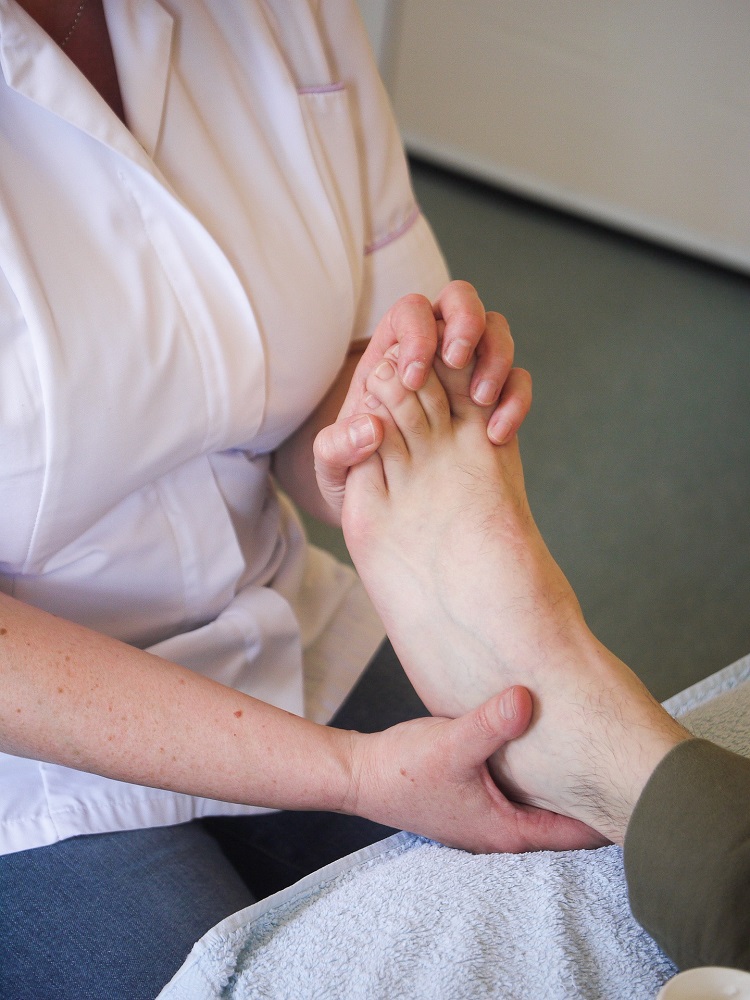
E.J. Lilly stays in a shelter.
“When my mother was alive, she always told me to take care of my teeth and my feet,” she said. “Selling the paper can be hard on the feet. My feet fall asleep; they get cold. I have to take breaks. They get wet. I do a pretty good job, though, of being prepared.”
When I asked E.J. about catching athlete’s foot from the showers in the shelter, she said, “Oh, no no no. My whole life, I’ve heeded my mother’s instructions,” she said. “I wear flip flops, I use tea tree oil, but I see people who don’t have those things, and it’s so painful. There are so many people on the streets losing limbs, so many women losing limbs in the shelter, toes, from diabetes, infection, years of being on the streets, age, lack of health care. It’s brutal. It’s feet especially. There’s a woman a bunk away from me, and there were a couple of nights she was in so much pain, and they ended up taking her away last night to the hospital. This morning, there was a trail of blood all the way across the shelter from her feet. She has diabetes. Her feet are just falling apart. They’re not getting medical attention in the shelter. There’s a gap. Unfortunately, homelessness is a business, just like prison is a business. Health is not a priority.
“But it blows me away, there is still so much kindness from people who are suffering so much. Every day I wake up to that,” she said.
Don Peterson stays both in shelters and on the streets. He has had trouble walking due to painful feet for the past three years.
“I don’t sit down and rest very much because then I have to stand up and get used to the pain again,” he said. “I stand up and I cringe for 20 minutes, then I get used to it, like a toothache or whatever. I used to medicate a lot to help me keep my mind off the pain. Now I use ibuprofen. That kind of helps as long as I’m eating. I have good days and bad days. Pain is like my friend, I take it with me everywhere I go, and I thank God for my life, for everything,” he said.
“Selling the paper can be hard on the feet. My feet fall asleep; they get cold. I have to take breaks. They get wet.”
John William Munro has been a Street Roots vendor for 10 years.
“I am lucky I had a job. These people who need help and can’t work, that’s terrible,” he said. John sells on the Portland State University campus and at Southeast 26th Avenue and Division Street on weekends. He lives in a group home and has been using a walker for a year and a half due to nerve damage in his feet caused by diabetes. “The damage is a side effect from the atypical medication I take for my disability. I wear diabetic shoes. I can’t practice tai chi anymore because my feet hurt so bad, I had to stop. Diabetes takes everything; you get amputations and shit. That’s a long ways off, but I just do the best I can. I get around.”
Paulette Bade is one of Street Roots‘ longest-serving vendors. She’s been with the newspaper since it was the Burnside Cadillac back in the late 1990s. She estimates she’s gotten hundreds of pairs of dry socks from Street Roots over the years.
“Standing there all day selling the paper, my feet used to get numb. Now I have the walker, and it’s a lot better,” she said. “Even with my walker, though, my feet still get wet. When your feet get wet, your whole body gets cold. Then you don’t feel good at all.”
Paulette is philosophical about the discomfort she experiences selling the paper. She feels it is a sacrifice worth making to get the news out.
“We’re all out there with the paper to help people know what’s going on,” she said. “The paper gives you strength to be out there, in a manner of speaking, because we are letting people know what it’s like.”




